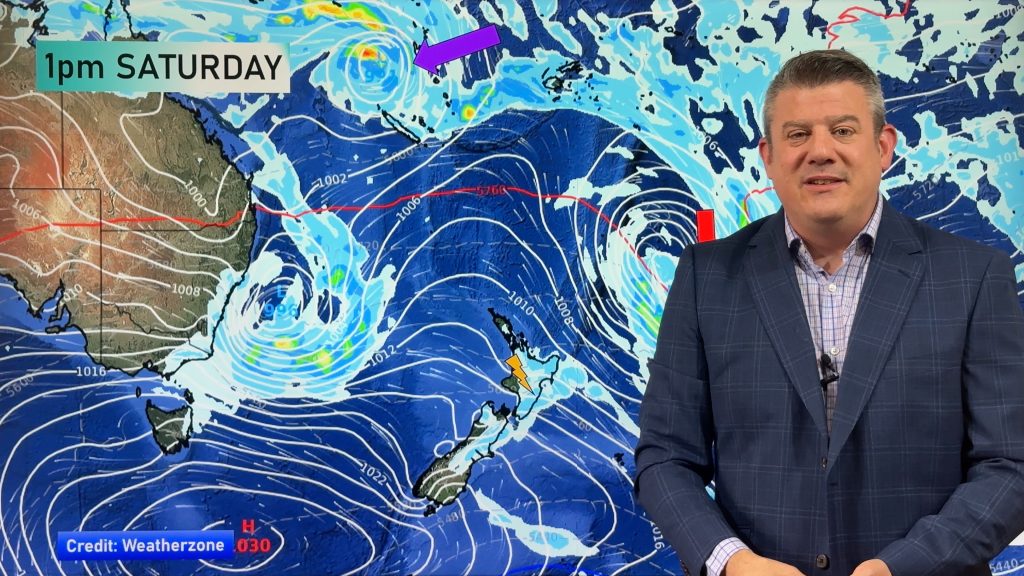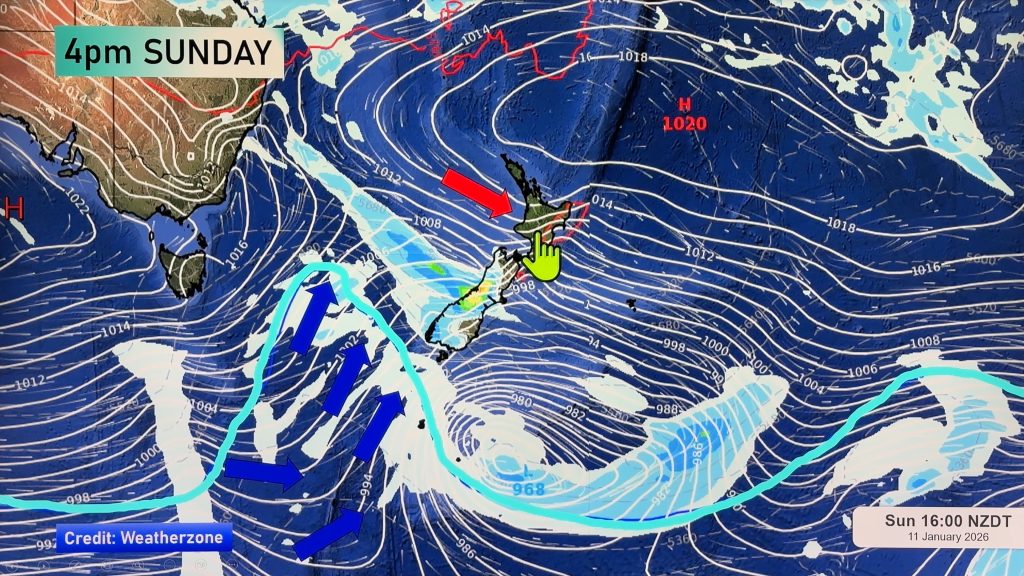A 2 C rise in temperature could put large parts of New Zealand under water
22/03/2012 1:00am

> From the WeatherWatch archives
Sea levels will rise up to 22 metres even if the worst scenarios for global warming are avoided, researchers say.
An international team of scientists, which included a New Zealander, found that a 2C increase in global temperature would still cause the world’s oceans to rise between 12m and 22m.
Two degrees is the recommended limit set by the Intergovernmental Panel on Climate Change. A bigger increase could lead to the melting of the West Antarctic ice sheet, some of the East Antarctic ice sheet and part of Greenland.
A 22m increase in sea level would dramatically transform New Zealand’s coastal boundaries, with low-lying areas like Auckland and Wellington’s harbours swamped by ocean currents.
But lead researcher Ken Miller said: “You don’t need to sell your beach real estate yet, because melting of these large ice sheets will take from centuries to a few thousand years.”
To reach their estimate, the scientists looked at sea levels in the period when the climate was similar to the present day – around 3 million years ago.
At that time, the amount of carbon dioxide in the atmosphere was similar to present levels and atmospheric temperatures were 2C higher than now.
Victoria University sedimentologist Tim Naish investigated tiny fossils hidden in sediment in the Wanganui Basin. The fossils are known to exist at certain water depths, so they give clues to the sea levels millions of years ago.
He also calculated sea level changes by looking at old shorelines which had been exposed by tectonic uplift.
By combining these observations with international evidence, the team concluded with 95 per cent confidence that 3 million years ago the sea level peaked up to 30m above the present level, with a best estimate of 22m.
Dr Naish: “If you were standing at Marlborough looking north, you had a very big Cook Strait. Everything from Wellington, Manawatu, Palmerston North, southern Hawkes Bay would have been ocean. You wouldn’t have hit the shoreline until you got up to southern Taranaki and central Hawkes Bay.”
“If you were sitting at the Auckland or Wellington waterfront, a 20m sea rise would have high-rise skyscrapers sticking right out of the ocean. It would go all the way up Lambton Quay and be flooding the Basin Reserve,” Dr Naish said.
“You can engineer in some cities to avoid this, but in other areas you can’t, and you have to move away.”
Although Dr Naish was cautious about estimates for the long-term sea level rise, he said it was well-established that oceans would rise one metre this century.
3 MILLION YEARS AGO
- The last time the earth’s climate was similar to the present day, sea levels were 20m above present levels.
- This was 3 million years ago, during the Pliocene epoch.
- At this time, Wanganui, Manawatu, Wellington, Palmerston North and lower Hawkes Bay were underwater.
- The Ruahines and Tararuas had not popped out of the water yet.
- The shoreline was at southern Taranaki and southern Hawkes Bay.
- The scientist described it like this: “The whole of the southern central North Island was shallow ocean, no deeper than 100-200 metres. You had a very big Cook Strait and there was nothing in the southern North Island.”
- Nearly all of the South Island was above water.
Photo by CM Kong
Story by Isaac Davison/NZHerald.co.nz
Comments
Before you add a new comment, take note this story was published on 22 Mar 2012.





Add new comment
Ken Ring on 22/03/2012 11:43am
When are the public going to wake up to the fact that this is yet another drive for more research funding? And what happened to the NIWA Lyttelton study of 1998 that found that sealevels were rising only by 1mm/yr, which means 4 inches per century?
The facts are that we are at the end of this interglacial. The seas have risen all that they can since the last ice age has thawed. They cannot go higher. Where would the extra water come from?
Antarctica has been thickening over the past 17 years.
http://www.c3headlines.com/2009/04/new-research-confirms-antarctic-ice-expanding-thickening-also-arctic-ice-expands-680-km2-above-norma.html
http://www.usatoday.com/news/science/cold-science/2002-01-18-wais-thicker.htm
http://www.sciencemag.org/content/331/6024/1592
If global warming raised sealevels then we should expect higher sealevels in summer’s warmer air, up by much more than 2degrees, compared to sealevels over winter. If your article was true our sealevels should vary with the change of seasons by up to 12m. How come no one in the Wellington CBD has noticed that they have been underwater all summer?
A good case for a Tui billboard.
Reply
Guest Steve on 24/03/2012 4:27am
You have hit it right on the button Ken. Good to see your comment.
Reply
Dan on 22/03/2012 9:08am
Sudden and catastrophic climate change could occur if the huge stores of methane under the East Siberian Arctic Shelf are released. See this news article http://www.independent.co.uk/news/science/vast-methane-plumes-seen-in-arctic-ocean-as-sea-ice-retreats-6276278.html and read the preface of this book by Dan Dorritie, a paleontologist, written in 2007 http://www.killerinourmidst.com/ It’s all a tad scary if you ask me.
Reply
Guest on 22/03/2012 6:28am
…we’re already under water from all the rain!!!
Reply
Dave on 22/03/2012 1:46am
One thing about this is they certainly won’t be around to be proven wrong so they can say whatever they like. Sounds very far fetched to me. Cheers Dave
Reply
David on 22/03/2012 3:34am
Can’t wait, glad I live on a hill, at least by then I may have a beach on the boundary, neat!
With all that Carbon Dioxide around 3 million years ago I wonder who was there to be taxed aka ETS scheme etc, funny that person here was gone by lunchtime yesterday ha.
Excuse me while I again roll around laughing.
Cheers.
Reply